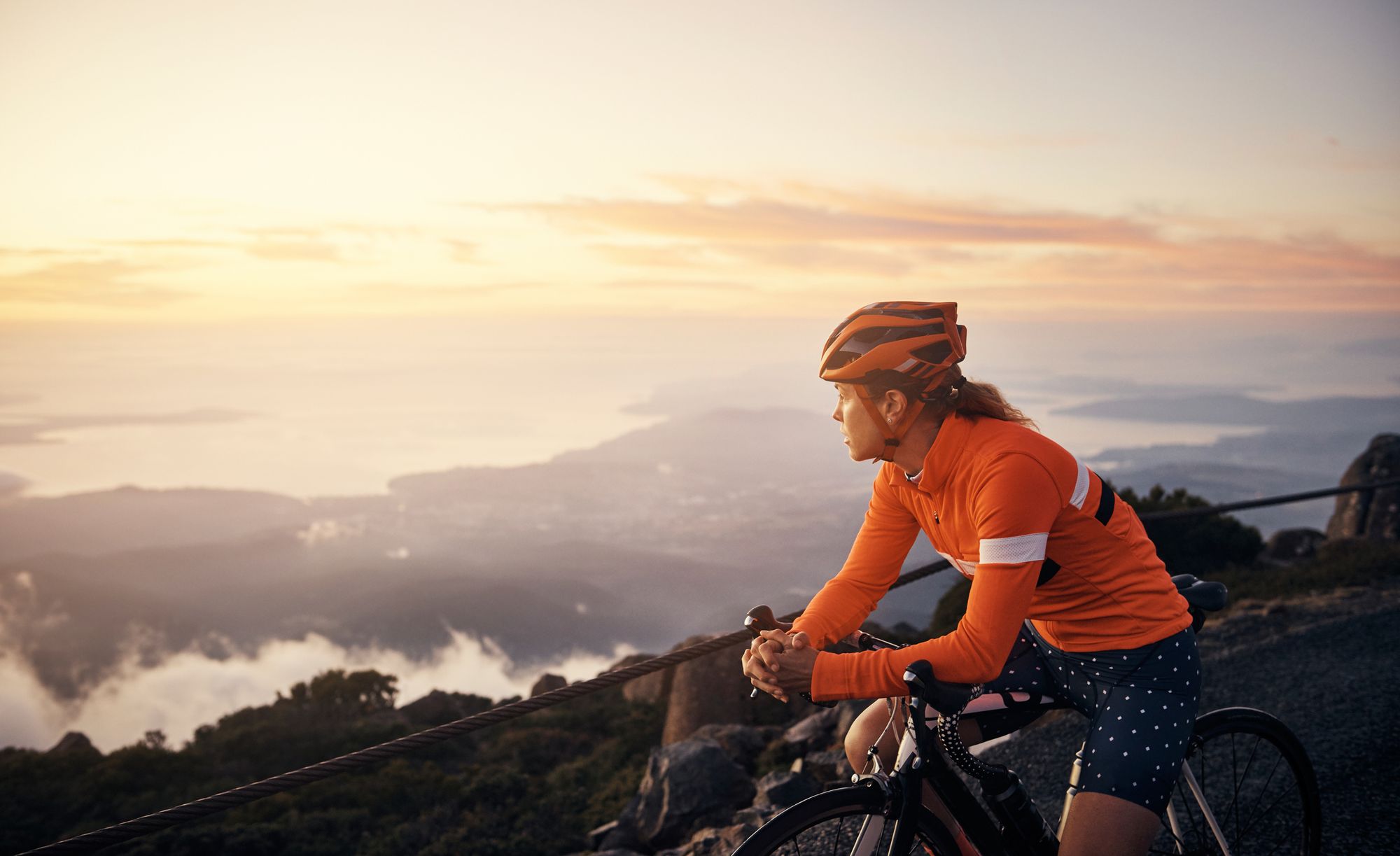There is one concern that is more common than any other when it comes to booking a group cycling trip. It’s not potential flat tyres (your expert guide will see to those). It’s not even the hill climbs - generally, most people are happy to put in the work to get those views. Rather, it’s the concern that, on a group cycling trip, you’ll be slower than everyone else, and stuck at the back of the pack. This is a much more common concern that you might imagine.
We sat down to talk about exactly that with Endrit Shima, one of our cycling guides, who organises and leads cycling tours in the backcountry of Albania.
I don’t think you should be afraid of being fit enough - or of being the last one in the group. We come across different fitness levels, and that's completely normal...
“Our trip in Albania starts at Lake Ohrid, a UNESCO site,” says Endrit of that trip, “and then the rest is quite remote, in southeast Albania. There are mountain roads with almost no cars, small villages and towns bordering Greece with a lot of greenery and high mountains - and along the Vjosa, it becomes very nice and scenic, beneath the very rough faces of the Nemërçka mountains.”
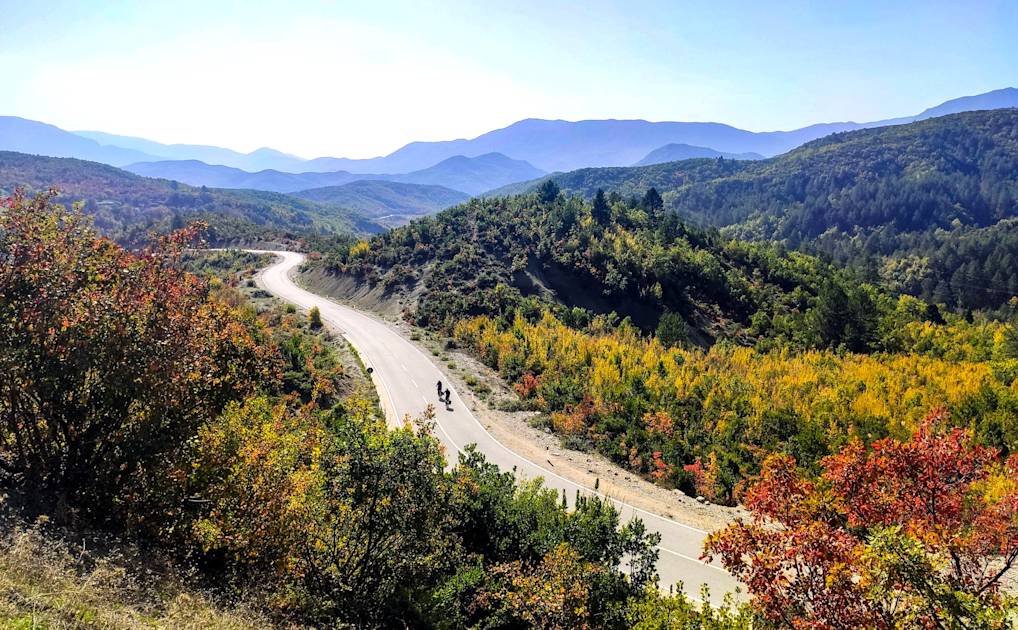
So, on to it. We asked Endrit - is everyone afraid of being at the back of the pack?
“Yeah,” he laughs. “But I don’t think you should be afraid of being fit enough - or of being the last one in the group. We come across different fitness levels, and that’s completely normal. You should be fit, but in general, our guides are very experienced and they know how to handle it. They find a balance.”
Vicky Leach, the curator of our cycling adventure collection, agrees.
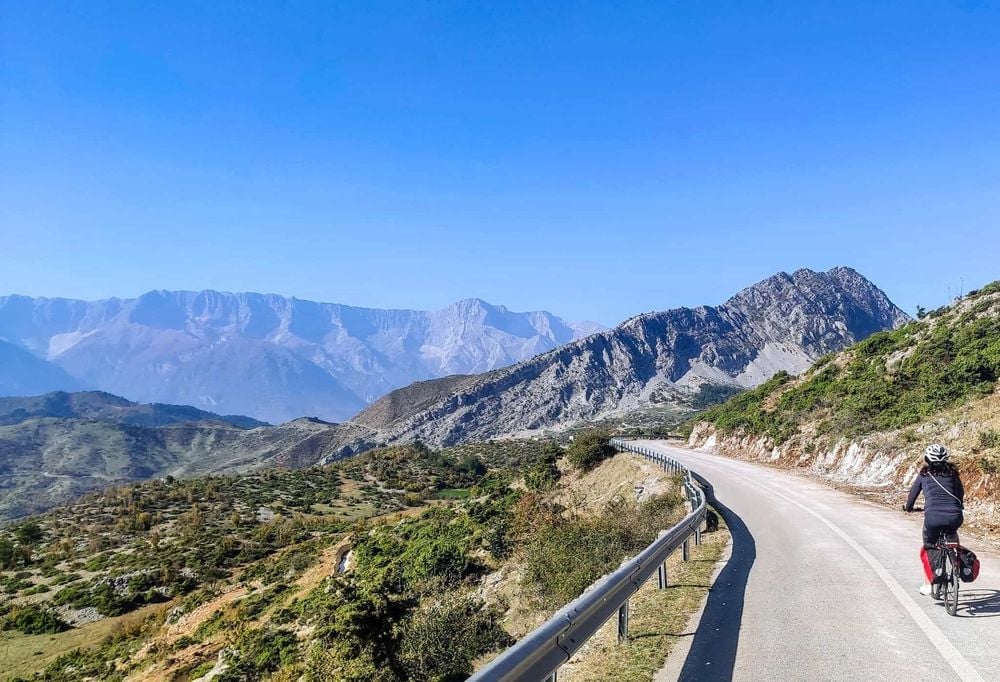
“Quite a lot of people are hesitant about slowing down the group or being at the back, but just don't worry about it,” Vicky says. “If you want to go on the trip, you can cycle at your own pace.
On the hills, people will do it at their own pace.
“There will be a support vehicle, and you'll never really feel like you're by yourself at the back. That won't happen. On the hills, people will do it at their own pace. So, you might be at the back one time and you might be at the front for the next bit. If you’re at the back, people will loop back and talk to you. That happens quite a lot. There's a bit of camaraderie when you're cycling in a group."

It is entirely normal - expected, even - for a group cycling tour to be made up of people of various fitness levels.
Endrit continues: “You’re all going to be rolling at different speeds, with the support vehicle also being there, and stopping at regrouping points. We use two guides, so if there is a need for group separation or for moving at different paces on different days, then we have another guide. In general, it’s not an issue.”
There can actually be tangible benefits to taking your time on the road.

“They will try to find a balance,” says Endrit. “If all the group is very fit and they enjoy going at a higher pace than a normal tour, the guide will make them aware and if you want to continue that, we will - because everyone is enjoying it - but otherwise they will assure you of the benefits of doing it slower. If you arrive at your accommodation at 1pm for example, there might not be much to do there, so why not take your time at the good scenery along the route on the way?”
Of course, it is crucial that people read the itinerary of a trip, and try to choose a trip that is right for them in terms of fitness. Training is often a good idea.
If you’re not familiar with the numbers - kilometres travelled, and metres of altitude gained, for example, it can be a good idea to replicate those numbers at home...
“You do have to be fit to do this trip,” says Endrit. “It’s not for someone who has never been cycling in their life. It’s not on e-bikes, and everyday, there is some terrain that is steep. So your fitness levels should be at a certain level to enjoy it.
“You never know how you’re going to feel on any given day, but we do have guides and they’ll tell you - 'today is a rougher climb, you may find it difficult'. If you’re struggling, they might suggest that you skip the climb by taking the support vehicle to save energy. There are a lot of options, and it’s quite flexible.”
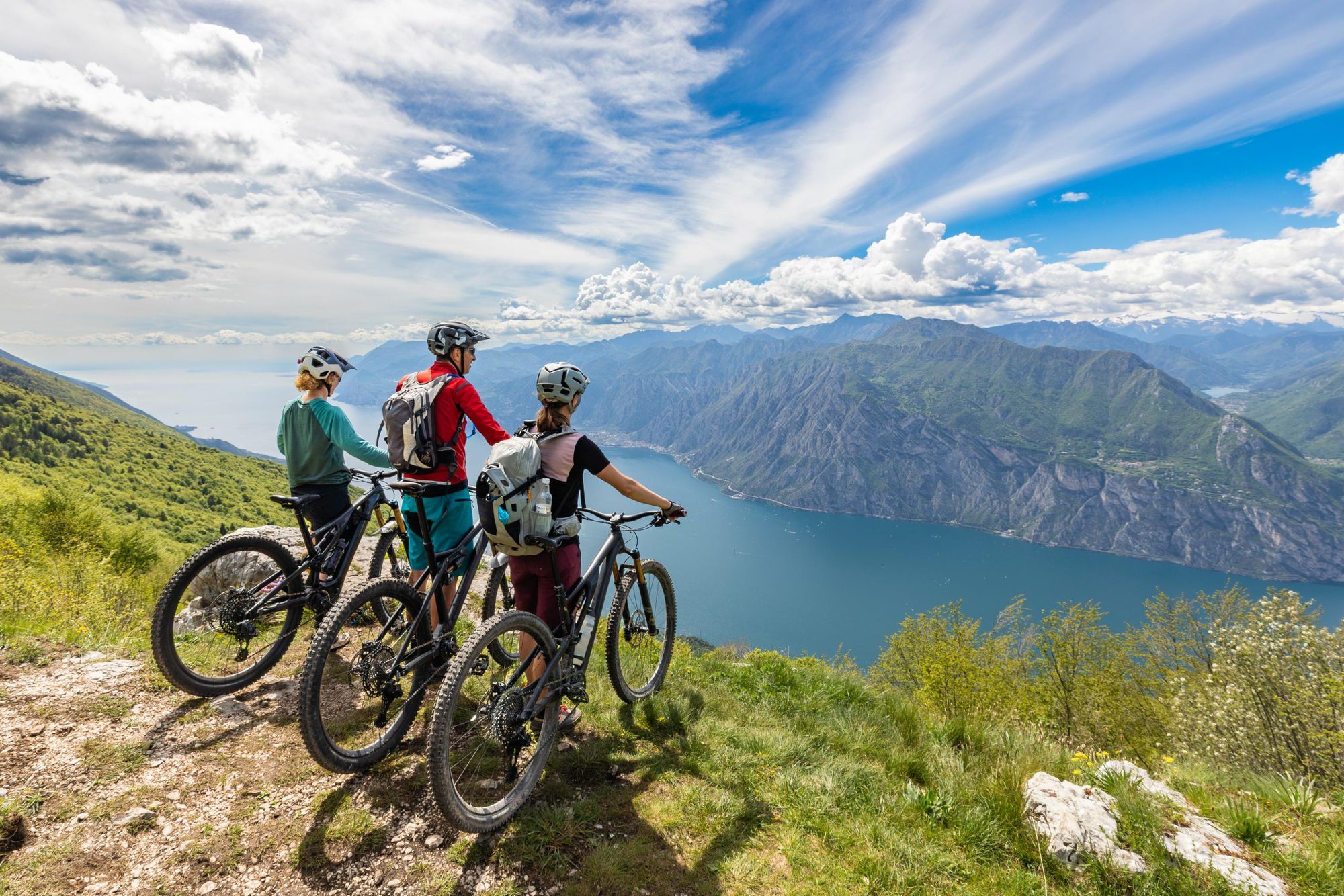
Vicky adds: “Riding in a group, cyclists tend to be considerate to slower paces and the group will ease off to let those at the back recover. Keep yourself watered and fed to minimise flagging and minimise dropping back.”
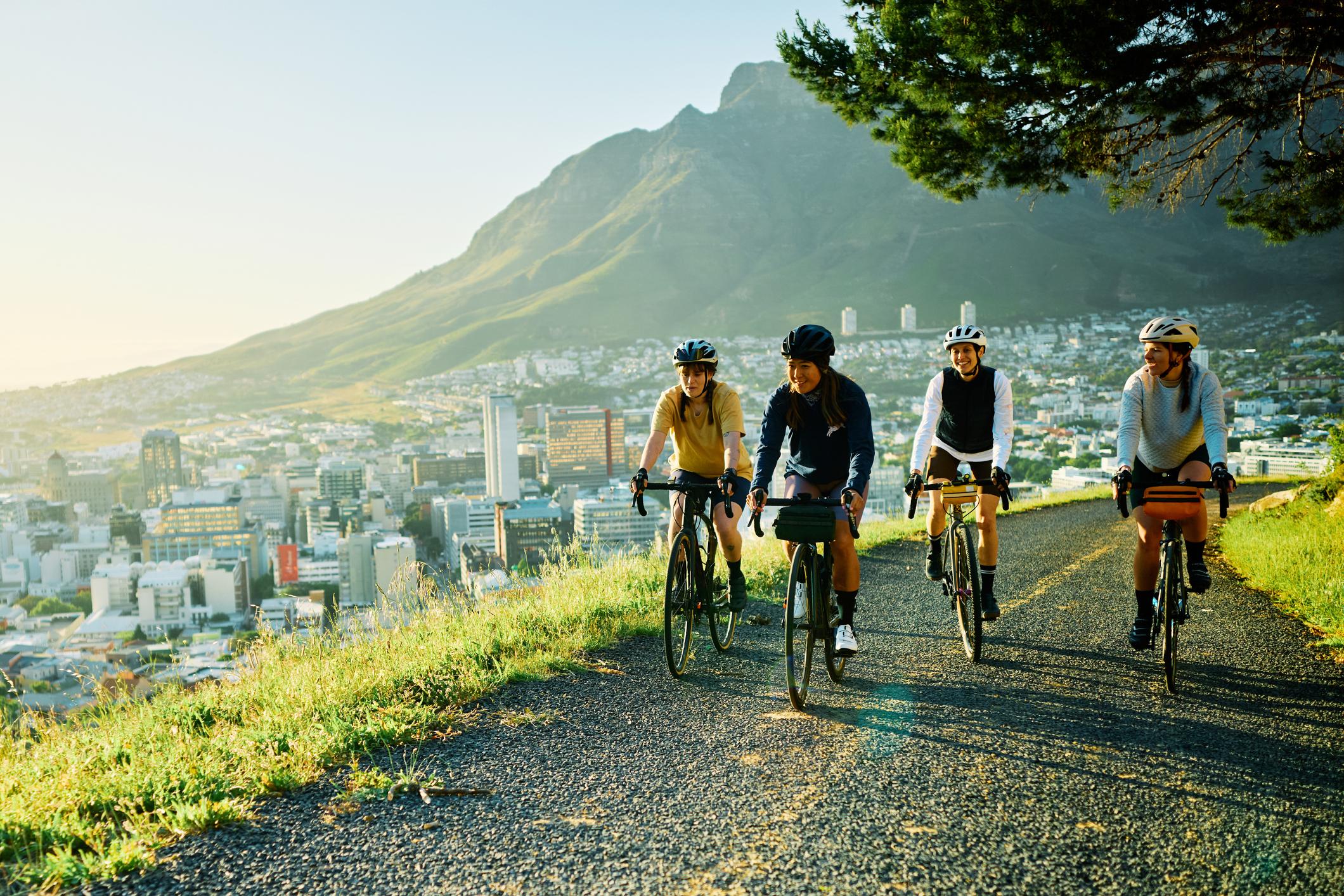
Vicky notes there’s a lot of things you should consider while choosing your trip.
“Do you want to be on a bike for five hours every day?" she says. "Do you want to be climbing or do you want a route that is a bit more undulating? The Albanian trip has several mountain passes - so is that of interest to you? I think some people think with their heart, and look at a destination they want to go to, but often they don’t necessarily look at each day, and the distance and ascents.”
The most substantial climb on the Albania cycling trip is the Llogora Pass, a mess of hairpin bends with views looking out over the Ionian Sea.

“It has zig-zags, which means it’s not so steep,” says Endrit, “but it is a long climb. You reach 1,600m of elevation, so it's a long day, but with beautiful views.”
So, any training tips? “If you’re not familiar with the numbers - kilometres travelled, and metres of altitude gained, for example, it can be a good idea to replicate those numbers at home,” Endrit says. “Just to get a feeling for how it works. On the other side; start slowly on the tour itself. There might be one day that cyclists would do in two and a half hours, but we’re cycling for enjoyment! We'll cycle, and then have a coffee, and then stop to look at the views.
"You don't have to prove to yourself; it's more about taking it slowly and making sure you're not getting injuries.” At the end of the day, the views, the journey and the feeling of accomplishment as you go make the uphills more than worthwhile.
Inspired? Check out our full range of cycling adventures now!

